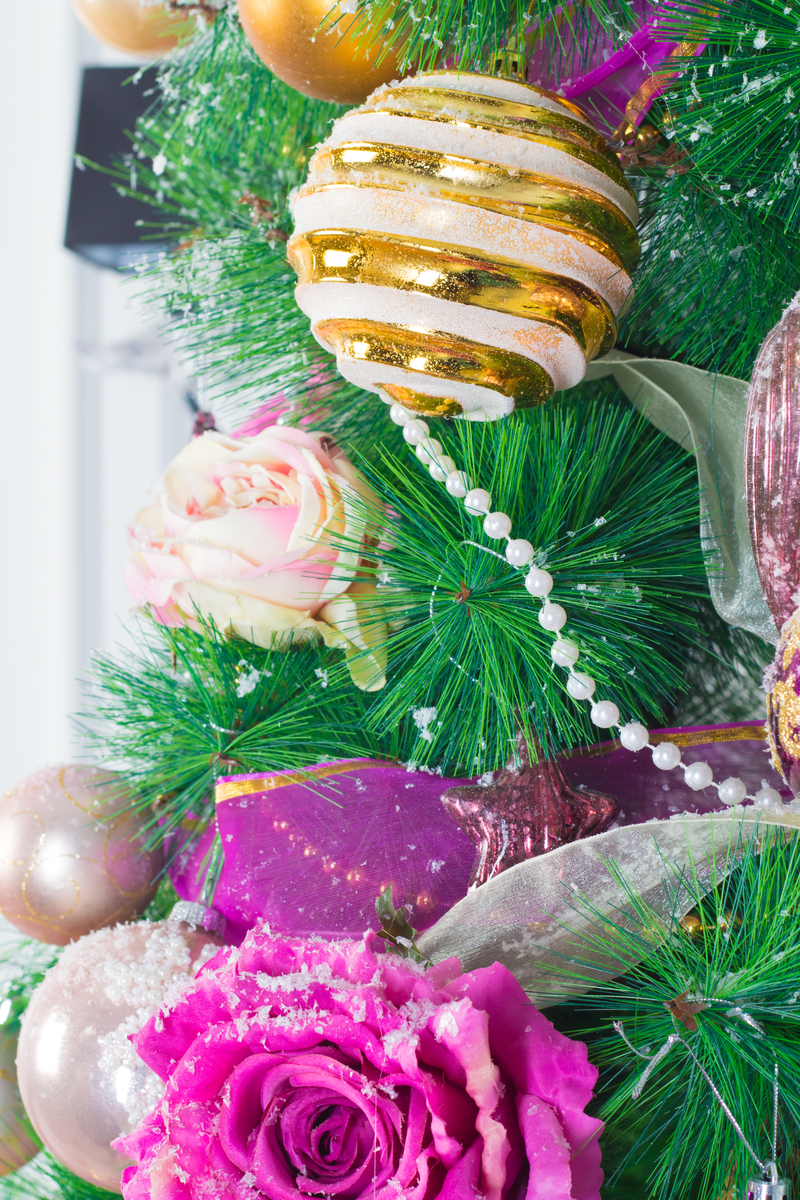Eye-Opening Tulip Facts: 7 Things Most People Don't Realize About These Flowers
Imagine fields awash with brilliant color, stretching to the horizon as the sweet scent of nature's artistry fills the air. That's the magic of tulips--one of the world's most beloved blooms. But beneath their vibrant petals and elegant shape lies a history and biology that many people never learn about. In this comprehensive guide, we'll dig deep into fascinating and little-known tulip facts, revealing truths that are bound to surprise both garden enthusiasts and casual admirers alike.
An Introduction to Tulips: Nature's Masterpiece
Tulips have captivated people for centuries. Originating from Central Asia and finding fame in Ottoman gardens before enchanting Dutch growers, tulips carry centuries of tradition, drama, and innovation. While many appreciate the flower's vibrant appearance, there's far more beneath the surface. Let's explore seven eye-opening tulip facts and discover why these fascinating flowers are so much more than meets the eye.

1. Tulip Mania: The World's First Economic Bubble
The Dutch Love Affair and Financial Meltdown
Tulip Mania refers to a period during the Dutch Golden Age where the price of tulip bulbs soared to astonishing heights before dramatically collapsing in the winter of 1637. The frenzy over rare and unique tulip varieties became so extreme that entire fortunes were traded for single bulbs! Though the actual economic impact is debated among historians, this phenomenon marks one of the world's first recorded speculative "bubbles."
- At the height of Tulip Mania, some rare bulbs cost more than luxurious homes along Amsterdam's grand canals.
- Prices crashed virtually overnight, devastating investors and etching the word "tulip" into economic history as a cautionary tale.
- Today, tulips remain an integral symbol of Dutch culture, but without the dizzying financial risk.
2. Tulips Weren't Always Dutch
The Surprising Central Asian Origins
Many people automatically associate tulips with the Netherlands. While it is true that the Dutch helped popularize and commercialize tulips, their journey began much farther east. *Tulips are actually native to the mountainous regions of Central Asia, particularly in present-day Kazakhstan, Uzbekistan, and Kyrgyzstan.* Wild tulip species were first cultivated by the Ottomans in what is now Turkey, celebrated for their elegance in royal gardens.
- Tulips made their way from the Ottoman Empire to Europe in the 16th century, thanks to diplomats and botanists.
- The word "tulip" comes from the Persian word "delband", meaning turban, likely due to the flower's resemblance to a traditional headpiece.
- It was only after arrival in the Netherlands that tulips became a cultural phenomenon, turning Dutch landscapes into vibrant canvases.
3. A Spectrum of Surprising Tulip Colors
Beyond Red and Yellow: The Rainbow of Tulips
When most people picture tulips, they often imagine classic red or yellow blossoms. However, tulips are one of the most colorful and diverse flowers available. With over 3,000 registered varieties, these flowers dazzle the senses with nearly every hue imaginable--except, surprisingly, true blue!
- Tulips are found in shades of white, pink, purple, orange, green, black, and even striped or variegated patterns.
- Tulips that appear black--like the famous "Queen of Night"--are actually deep shades of maroon or purple.
- The blue tulip remains elusive. No naturally occurring blue tulip has ever been found, despite breeders' best efforts.
Tip: Want a unique tulip bed? Plant 'Rembrandt' tulips for their astonishingly painted petals, which look like brush strokes of color!
4. Tulips Have Deceptive "Black Hearts"
The Secret Behind the Center
One of the most striking tulip facts is the dark coloration at the center of many varieties. This area, often called the "black heart," isn't just for show--but plays a crucial role in the flower's reproductive process. The bold blotch helps attract pollinators, such as bees, by mimicking the appearance of nectar-rich or pollen-rich flowers and providing a visual target.
- Black centers act as a guide, signaling bees where to land for maximum pollination efficiency.
- Some biologists believe the dark center also absorbs more heat from sunlight, which may boost pollen activity.
- This unique trait gives many tulip varieties their signature appearance--and adds to their enigmatic beauty.
5. Tulips Can Be Eaten--But Beware!
When Flowers Become Food: Survival Stories & Culinary Curiosities
Surprisingly, tulip petals and bulbs are technically edible--though that doesn't mean they're safe or palatable! During WWII, the Dutch faced such severe famine that tulip bulbs were consumed as a last resort. They were used to make flour, mashed like potatoes, or even roasted. Some chefs and florists use petals as colorful garnishes, but not all tulip parts are harmless.
- Some tulips contain toxic compounds that can cause stomach upset and skin irritation, especially in large quantities.
- Only particular varieties are considered even marginally safe for human consumption.
- Pets--especially cats and dogs--should never be allowed to nibble tulips, as they are particularly sensitive to these toxins.
Fun Fact: The Dutch have since moved on to more enjoyable cuisine, but tulip bulb soup remains a symbol of resilience during hardship.
6. Tulip Varieties Go Way Beyond the Basics
Astonishing Diversity for Every Taste
Most people only recognize the standard cup-shaped tulip, but there's a dazzling range of forms and types available to gardeners and florists alike. Modern breeders have developed varieties with fringed, feathered, double, or even parrot-like petals.
- Double tulips have layers of petals, mimicking the lush look of peonies or roses.
- Fringed tulips display ruffled edges reminiscent of delicate lace.
- Parrot tulips feature twisted, curly petals in striking color combinations.
- Viridiflora tulips showcase green streaks that add an artful touch to the blossom.
- The Kaufmanniana and Greigii species surprise with mottled or striped foliage, making them attractive long before they flower.
Gardeners looking to impress should consider mixing types for a dramatic, textured effect in borders and bouquets.
7. Tulips Communicate--Just Not the Way You Think!
Tulip Language: More Than Just Beauty
Victorians believed all flowers had meanings. Tulips, with their vivid colors and elegant silhouette, have a language all their own. Traditionally, red tulips represented true love, yellow symbolized cheerfulness or sometimes hopeless love, and purple conveyed royalty.
- White tulips are associated with forgiveness or worthiness.
- Striped tulips used to signify "beautiful eyes" in the secret code of the nosegay.
- In the modern era, tulips often symbolize renewal, perfect love, and the joy of spring.
Tulips also communicate in subtle, biological ways. Their stems bend towards the light--a trait called "phototropism"--allowing them to adjust and find the best conditions for growth, even after being cut. This is why a tulip bouquet "moves" in a vase more than other flowers!
Tulip Facts: FAQs
Frequently Asked Questions About Tulips
- Q: When is the best time to plant tulip bulbs?
A: Plant tulip bulbs in autumn, around 6-8 weeks before the ground freezes. This allows them to establish roots ahead of winter for a glorious spring display. - Q: How long do tulips bloom?
A: Most tulip varieties bloom for about 1-2 weeks. To extend the season, plant a mix of early, mid, and late-flowering types. - Q: Are tulip bulbs perennial?
A: In their naturalized conditions, some species can return year after year. However, modern hybrids often bloom best the first year and may diminish over time unless lifted, divided, and replanted. - Q: What is the best way to care for cut tulips?
A: Keep the vase filled with fresh water and trim the stems every few days. Place the arrangement in indirect sunlight. Tulips will "grow" and bend, so rearrange if desired! - Q: Can tulips grow in pots?
A: Absolutely! Use quality potting mix, ensure good drainage, and keep pots cold through winter for beautiful spring color.

The Enduring Allure of Tulips
Tulips continue to captivate us through their history, versatility, and breathtaking beauty. From surviving famine to fueling economic bubbles, from field to vase, these flowers have a tale as vivid as their petals. Whether you're a seasoned horticulturist, an aspiring gardener, or simply an admirer of blooms, these surprising tulip facts invite you to look deeper and appreciate the remarkable story behind every blossom.
Next time you admire a tulip, remember: this elegant flower once was so valuable it bought homes, survived as wartime bread, and still refuses to turn blue! With over three thousand varieties and a legacy woven into world history, the tulip is far more than just a pretty face in the spring garden.
Explore More About the Tulip World
- Plan a spring trip to the Keukenhof Gardens in the Netherlands to see millions of tulips in bloom.
- Experiment with different tulip species in your home garden for continuous color and interest.
- Share these eye-opening tulip facts with friends and family--because every flower has a story worth telling!
Conclusion: Tulips--Nature's Timeless Treasure
Whether you're intrigued by their economic history, surprised by their edible roots, or simply enchanted by their stunning appearance, tulips offer something for everyone. Understanding the facts about tulips not only deepens your appreciation but also connects you to centuries of beauty, drama, and science. Enjoy the wonder that these unique blooms bring to our world--one petal at a time!

